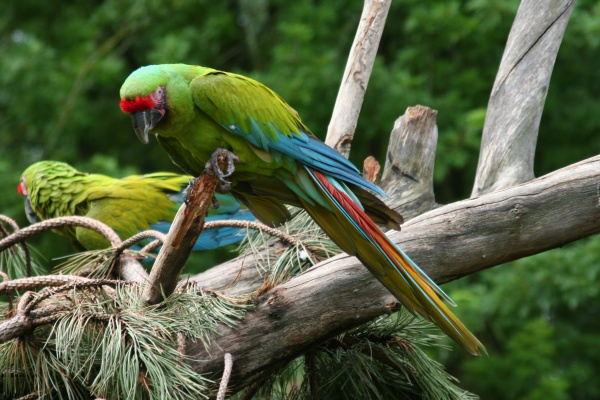Facts About Great green macaw
The Great Green Macaw, also known as Buffon's Macaw or the Great Military Macaw, is a striking parrot native to Central and South America. These birds are found in countries such as Nicaragua, Honduras, Costa Rica, Panama, Colombia, and Ecuador. There are two recognized subspecies, with one being endemic to Ecuador. They belong to the Ara genus, which also includes other large parrots like the Scarlet Macaw and the Blue-and-Yellow Macaw.
This bird has a fascinating history of classification. Its scientific name was updated from Ara ambigua to Ara ambiguus in 2004. Some debate persists regarding whether the species should be divided into subspecies due to their genetic similarities.
Great Green Macaws are the largest parrots in their natural habitats. They are easily identifiable by their reddish foreheads and blue lower backs. Their primary color is green, complemented by brownish-red tails tipped with pale blue. The subspecies guayaquilensis is distinguished by a smaller bill.
These macaws inhabit tropical forests, with specific habitat preferences varying by region. Their diet is diverse, consisting of seeds, nuts, fruits, flowers, bulbs, roots, and bark. In Costa Rica, their breeding season typically spans from December to June, while in Ecuador, it occurs from August to October.
Unfortunately, Great Green Macaws face numerous threats. Habitat loss due to deforestation, hunting, and capture for the pet trade are significant concerns. However, conservation efforts are underway to protect these magnificent birds. Initiatives such as establishing protected areas and creating conservation plans in countries like Costa Rica and Nicaragua are crucial.
The IUCN lists the Great Green Macaw as endangered, with the subspecies guayaquilensis being among the rarest parrots in the world. While some populations are showing signs of recovery, ongoing conservation efforts are essential to ensure the survival of this remarkable species.

 Brazil
Brazil